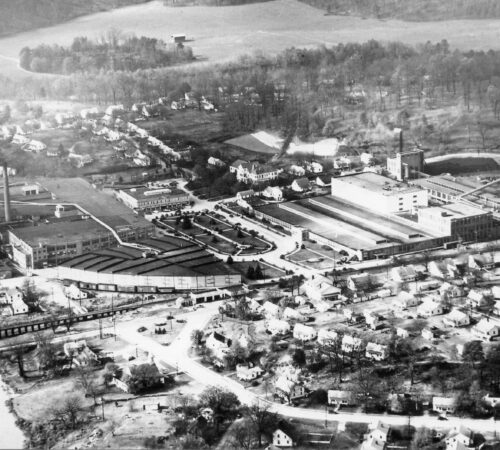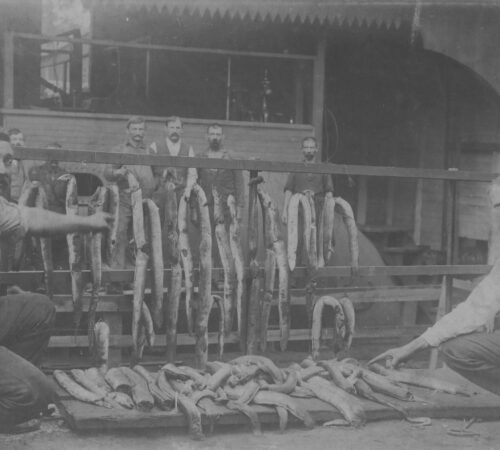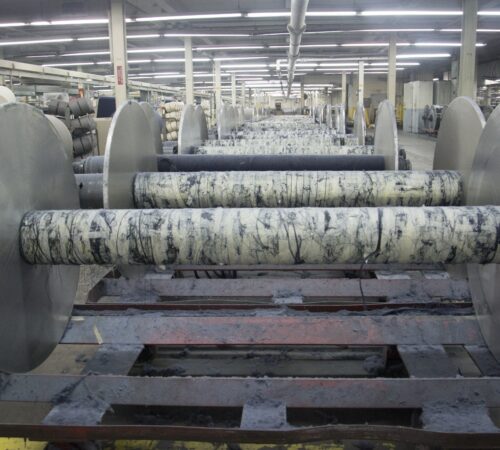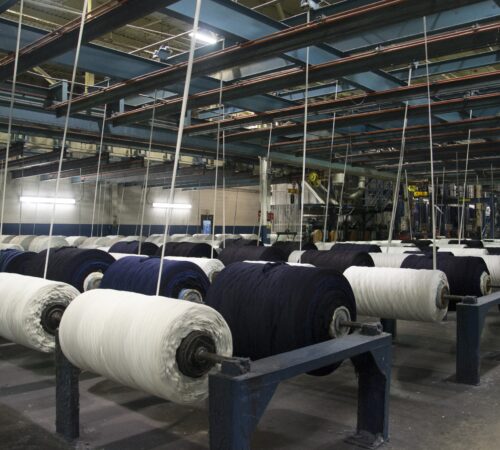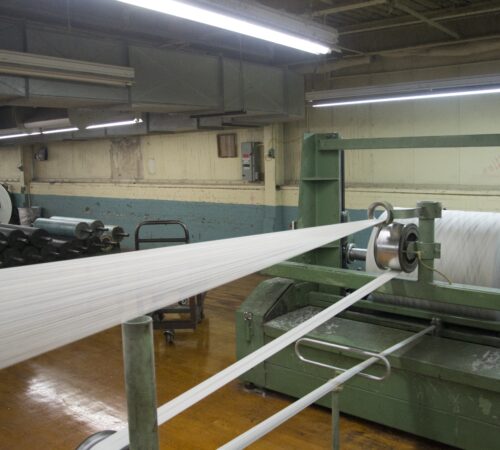Visit a town whose textile mill served as the foundation of a close-knit community.
This quiet town is completely founded around the formation of Raccoon Mill, later Berryton Mill, with the town itself serving as the mill’s mill village. Berryton no longer hosts any textile production as the mill closed down in 2000.
Visit
Places to See
The following properties are not open to the public, but you can view them from the exterior to learn more about the buildings that supported the textile industry here.
- Berryton Mill and Mill Village, 850 Raccoon Creek Road: The mill has been largely demolished, but some remains might be visible. The mill’s village is laid out in the haphazard “mill hill” style that was common in the 1880s and 1890s. Many of the homes along Back Berryton Road, Racoon Creek Road, and Dove Circle are fine examples of historic mill village architecture. Look for homes with hipped roofs or two front doors!
History
Berryton, an unincorporated community in Chattooga County, began its textile journey in 1883 with the opening of Raccoon Mills along the banks of Raccoon Creek. By the census of 1900, Raccoon Mill had a population of 441. Many area residents worked at Raccoon Cotton Mills operating the 104 looms and 3,400 spindles.
In 1910, John M. Berry purchased Raccoon Manufacturing Company, after the company declared bankruptcy, and changed the name to Berryton Mill. Berry, also owner of Rome Hosiery Mills in Rome, Georgia, used the mill’s 5,000 spindles and 200 workers to produce yarn for Rome Hosiery Mills and other mills in the area. Berry made extensive improvements and alterations to the mill, which operated by steam and waterpower and contained 5,000 ring spindles and 100 knitting machines.
The Raccoon mill village, later Berryton mill village, contained a mill owned company store, where residents could barter for goods, a public school, and three churches. The company owned about a 100 houses within the village and charged about 25 cents per room. Two families shared many of the mill homes and the village connected to other surrounding communities by railroad.
Although impacted by the national textile workers strike in the 1930s, through the decades the mill remained the center of Berryton life. The turning point for the mill occurred in 1951 during the Textile Workers of America strike with the killing of one non-striking female worker. Conditions for the mill continued to worsen when mill owner and President John M. Berry died in 1952. In 1958, a North Carolina company, Harriet & Henderson, purchased the mill from the Berry family and operated it until 2000 when the mill closed.
Charter Trail Members
Resources to Explore
Click on the following links to learn more about this region.
- Digital Library of Georgia
- Georgia Archives Virtual Vault
- Georgia Historical Society
- Chattooga County, New Georgia Encyclopedia
Back to Community List
Email the Trail at wgtht@westga.edu or visit our Contact Us page for more information.


